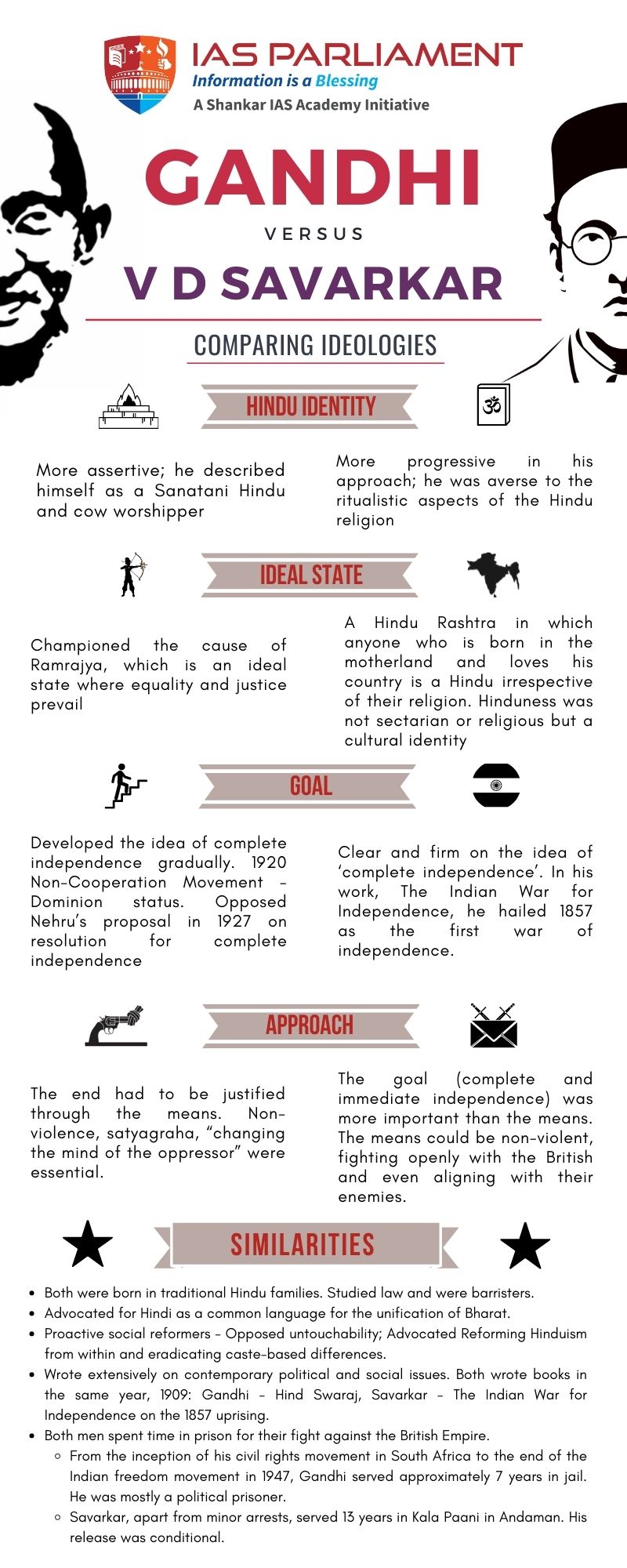7667766266
enquiry@shankarias.in
The 1911 to 1947 paradigm of the Indian freedom struggle was primarily dominated by two individuals - Mahatma Gandhi and V D Savarkar (Veer - the braveheart). Here is an overview of their ideologies.

Source: The Indian Express